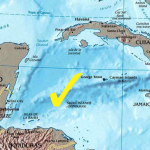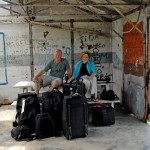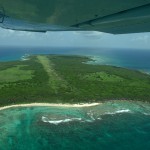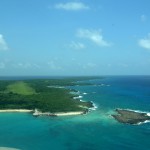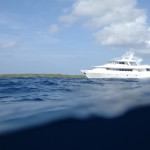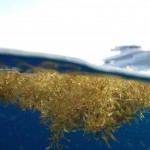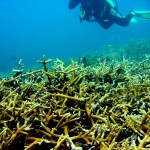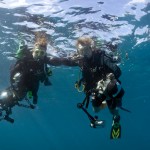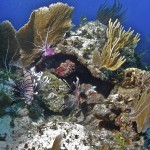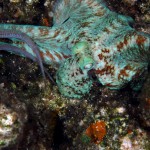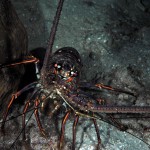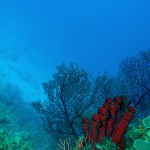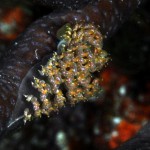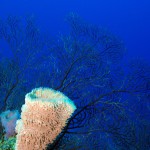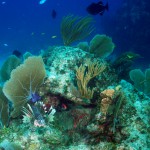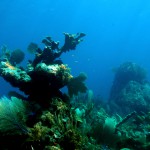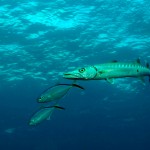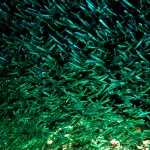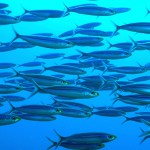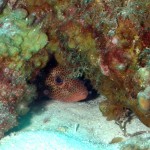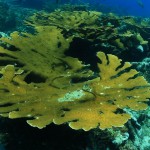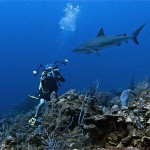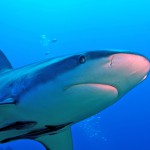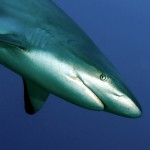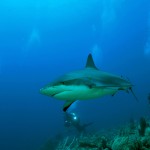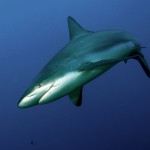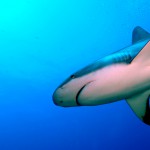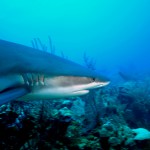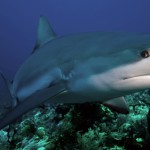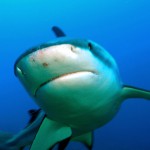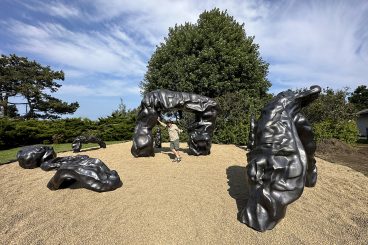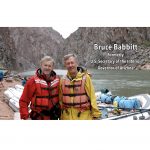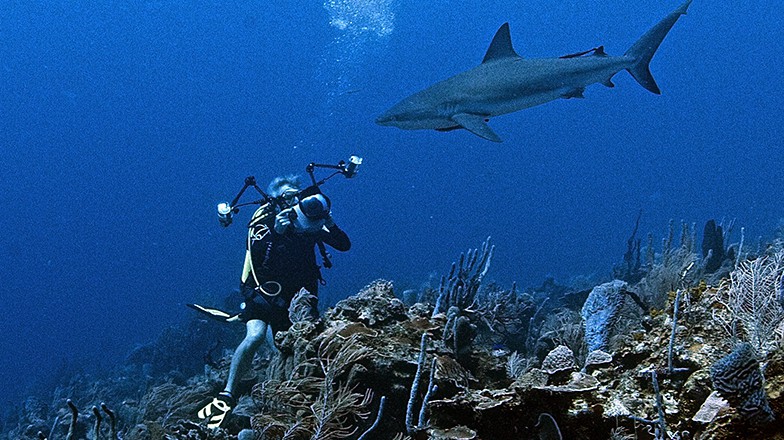
- 08
- 07
- 2011
- Category:
- Exploration & Discovery
Ocean research expedition to Honduras: July 2011
In July 2011 I joined friends in Honduras on a mission to explore the health of the Mesoamerican Reef which stretches nearly 700 miles in the Caribbean Sea touching the coasts of Mexico, Belize, Guatemala and Honduras.
The primary target for our work was the Swan Island Marine Preserve. Goals for our expedition included the following:
- Collect scientific data on coral reef health and sharks from this seldom-studied reef system
- Shoot video and still images to document current condition and provide material for conservation proposals
- Send expedition blogs and images “real-time” to a variety of media outlets to raise awareness
- Deliver a strong, strategic “Call to Action” to President Lobo that directly supports greater protection of the Swan Islands
Our research vessel, Utila Aggressor, included 18 passengers representing a wide variety of organizations:
- Healthy Reefs Initiative
- The SEAlliance
- National Geographic
- Wildlife Conservation Society
- Coral Reef Alliance
- Shark Legacy Project
- Honduran Government
- Roatan Marine Park
Dr. Sylvia Earle and I flew to Swan Island to meet our group which had sailed the previous day. After a short tour of the island including old military barracks, we joined our colleagues on the Utila Aggressor. Our research work included linear transects of reef systems and other methods to determine species abundance and assess trends versus historic data. The following is an excerpt from the trip report of Melanie McField, PhD Director, Healthy Reefs for Healthy People Initiative, Smithsonian Institution:
Coral Reef Health
A total of 9 reef sites around the Swan Islands were fully assessed using the Atlantic and Gulf Rapid Reef Assessment (AGRRA) protocol, with an additional two sites near Roatan. The general overview of the reef condition was rather disappointing. Most reefs were poorly developed with fairly low topographic complexity and low cover of living coral. Reefs appeared to be physically impacted, probably by high wave energy during storms and hurricanes. This area seems to have a high frequency of hurricane activity. However, the possibility of destructive fishing gear still being used around the island has also been noted by local observers. The fish populations were very low, indicating that they are probably still being fished (despite the legal decree protecting the island and the presence of Honduran military personnel on the island — particularly since they have no boat or surveillance equipment). All fish showed an obvious fright-response to the sound of the boat’s engine suggesting current fishing activity. It’s also possible that the reduced connectivity of this reef area, has resulted in the fish populations lack of resiliency to earlier over-fishing. A staff member on the Aggressor told us that about 15 years ago he participated in regular (monthly) fishing trips to the island during which they would remove about 15 tons of fish, lobster and conch. While the fish and lobster populations were low, a decent population of queen conch were noted on our dives.
Despite the reduced biomass of fish (numbers and sizes of fish), there were signs of hope in that two critically endangered goliath groupers and several critically endangered Nassau groupers were recorded. In total 57 fish species were recorded. Parrotfish abundance was relatively high, although most were juvenile or sub-adult. Conversion of the raw counts into biomass values and ranking onto reef health categories is not yet completed. The shark baited videos reordered sharks on 90% of the deployments, although none were seen within the AGRRA fish sampling (presumably due to the sharks avoidance of humans and boat engine noise). We are now discussing the possibility of incorporating the shark video deployments along site our AGRRA reef monitoring in future report card monitoring (if additional funding can be obtained).
A total of 34 coral species were recorded, including the critically endangered staghorn and elkhorn corals, along with the endangered bolder star coral. Several coral diseases were noted in approximately the same prevalence as average sites within the MAR (we had expected less disease given the remoteness of this reef). Coral cover seemed abut average or somewhat below average. Data analysis is not yet complete. One of the main surprises was the abundance of macroalgae which was on average appeared greater than seen at most reef sites in the MAR. The possibility of natural upwelling of deeper nutrient rich water is suspected, given the bathymetry of these banks.
To further tease our text-book expectations of which reef should be healthy and which ones should be unhealthy, these ‘misbehaving reefs” of Honduras also produced a pleasant surprise — in the unparalleled extent and vitality of the staghorn corals on Cordelia Bank, right in front of the International airport in Roatan. Sylvia Earle commented that this reef surpasses anything she has seen in the Caribbean — even counting 50 years ago when she first began exploring the reefs. The Healthy Reefs Initiative is deeply involved in the ongoing efforts to increase protection for both Swan Islands and Cordelia and will continue to push for stronger protection and greater scientific understanding of the ecological drivers on these reefs.
A shark assessment was conducted by Dr. Rachel T. Graham, Director, Gulf and Caribbean Sharks and Rays Program, Wildlife Conservation Society. Click the link to read Rachel’s report: Swan Islands Summit Report
On our last dive in Honduras several of us experienced a stunningly close encounter with a group of large Caribbean reef sharks. I was diving with Dr. Earle when several sharks approached very closely from different directions. While these approaches didn’t feel like attacks, I felt compelled to use my camera housing to nudge them away from nearly point blank encounters. As sharks reacted to pokes from my camera, their swimming became agitated. This attracted more sharks and we sought shelter under a ledge from this growing frenzy. Other divers slowly moved away and up to the dive boat, and we eventually followed.
Days later, seeking explanations this scary experience, we were told that the behavior of these sharks was likely the result of a lion fish control program in that location. Apparently marine biologists had been feeding these sharks speared lion fish in an attempt to encourage shark predation on these unwanted invaders from the Indian Ocean. With that explanation, it appears that the sharks likely approached us simply expecting to be fed. As I look closely at my point-blank photos of the sharks, I see expressions of curiosity versus aggression or malicious intent.
It’s an experience I’ll never forget. Several days later, another unforgettable experience began to unfold back in Maine.
Click the link to read an article on the Swan Islands in Bay Islands Voice: Bay Islands Voice article on Swan Islands

